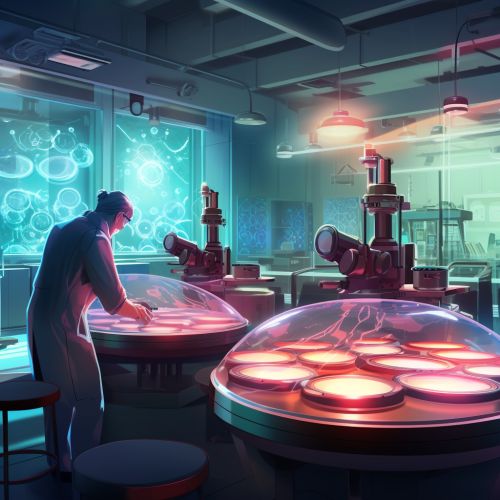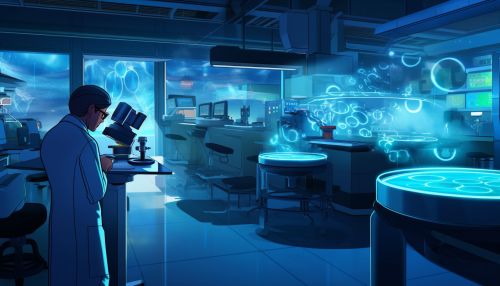Monoclonal antibody
Introduction
Monoclonal antibodies (mAbs) are laboratory-produced molecules engineered to serve as substitute antibodies that can restore, enhance or mimic the immune system's attack on cells. They are designed to bind to antigens that are generally unique to individual cells, allowing for targeted therapy.
History
The concept of monoclonal antibodies was first developed in the 1970s by César Milstein and Georges Köhler, who were later awarded the Nobel Prize in Physiology or Medicine for their work. Their research involved the fusion of a normal animal cell with a cancer cell, resulting in a hybrid cell, or hybridoma, that could both produce antibodies and replicate indefinitely.
Production
The production of monoclonal antibodies involves several steps. First, an animal, often a mouse, is immunized with an antigen. The animal's immune system responds by producing B lymphocytes, each of which produces a single type of antibody. The B cells are then harvested and fused with myeloma cells, a type of cancer cell that divides indefinitely. The resulting hybridomas are screened to identify those producing the desired antibody, which are then cloned to produce large quantities of identical (monoclonal) antibodies.


Structure and Types
Monoclonal antibodies have the same basic structure as normal antibodies, consisting of two heavy chains and two light chains. They can be classified into several types based on their structure and origin. These include murine, chimeric, humanized, and fully human antibodies.
Murine Antibodies
Murine antibodies are entirely derived from mice. They were the first type of monoclonal antibodies to be developed and are still used in some research applications. However, their use in human therapy is limited due to the human immune system's tendency to recognize them as foreign and mount an immune response against them.
Chimeric Antibodies
Chimeric antibodies are genetically engineered to contain mouse antibody variable regions and human constant regions. This reduces their immunogenicity compared to murine antibodies, making them more suitable for therapeutic use in humans.
Humanized Antibodies
Humanized antibodies are further modified chimeric antibodies, in which only the antigen-binding sites are derived from mouse antibodies. The rest of the antibody is human, which further reduces immunogenicity and improves their effectiveness in human therapy.
Fully Human Antibodies
Fully human antibodies are generated in transgenic mice or by phage display techniques. They are entirely human and therefore the least likely to provoke an immune response.
Applications
Monoclonal antibodies have a wide range of applications, both in research and in medicine.
Research
In research, monoclonal antibodies are used in a variety of laboratory techniques, including Western blotting, immunohistochemistry, and flow cytometry. They are also used in the development of vaccines and in the study of the immune system.
Medicine
In medicine, monoclonal antibodies are used in a variety of therapies, including cancer treatment, autoimmune disorders, and infectious diseases. They can be designed to target specific cells, allowing for targeted therapy that minimizes damage to healthy cells.
Future Directions
The field of monoclonal antibody research is rapidly evolving, with new techniques and applications being developed regularly. One promising area of research is the development of bispecific monoclonal antibodies, which can bind to two different antigens simultaneously. This could potentially allow for even more targeted therapies.
